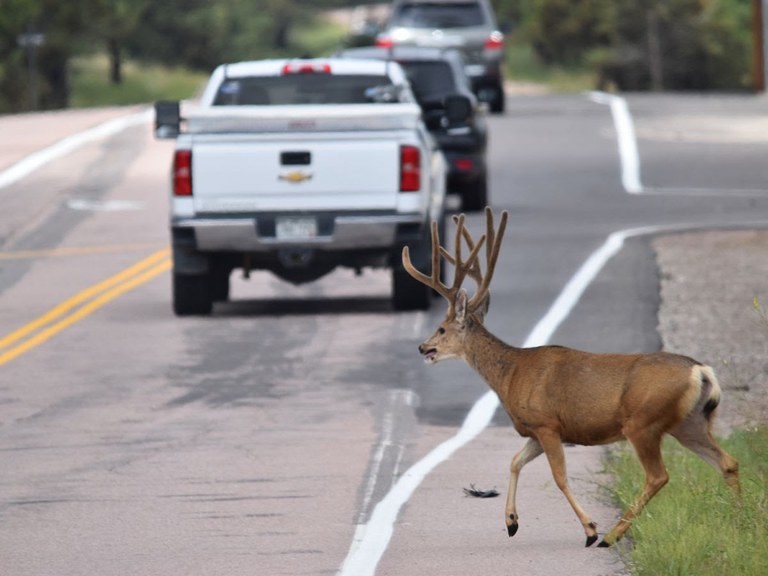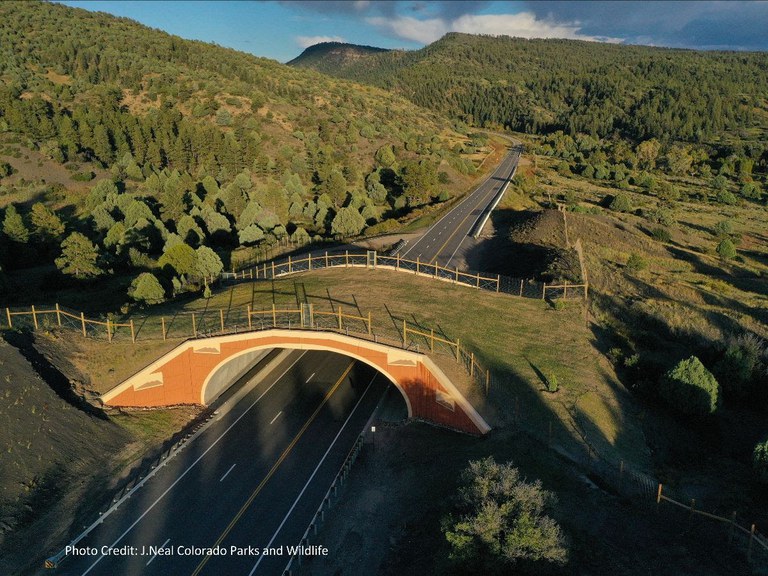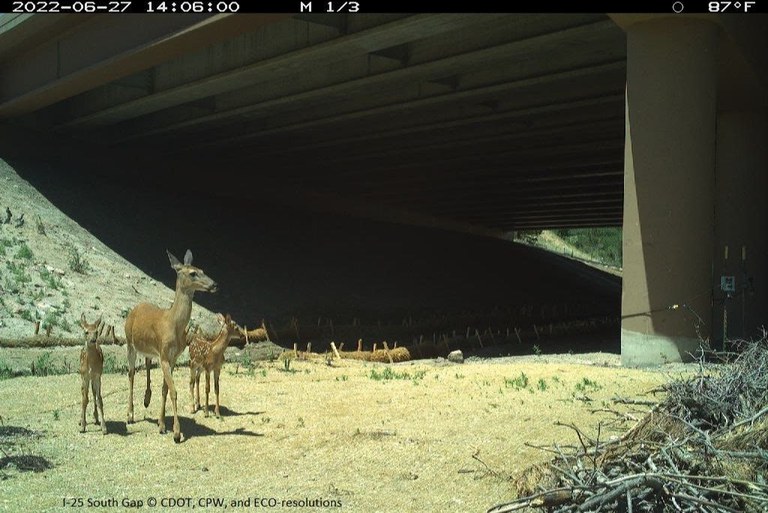Watch for wildlife, avoid collisions during daylight saving time
Travel Advisory

Denver – Changing your clocks with your driving habits during daylight saving time can help prevent wildlife-vehicle collisions. Wildlife experts advise drivers that wildlife is on the move so be aware, drive with caution and slow down at night.
This Sunday, Nov. 6, marks the end of daylight saving time in Colorado. This means drivers will set their clocks back an hour, see dusk earlier and witness more wild animals migrating to their wintering habitats during rush-hour traffic on highways. For tips for staying safe on Colorado's highways and byways visit: cpw.state.co.us/AvoidWildlifeCollisions.
As the sunlight fades during high-volume commutes, Colorado Parks and Wildlife asks drivers to stay alert and share roads with wildlife. Autumn is the peak seasonal mating and migration time for many species, so drivers should watch for wildlife as they begin to experience darker commutes.
The Colorado Department of Transportation also advises motorists to stay vigilant, drive with caution and slow down, as winter storms often push wildlife from the high country into lower elevations. Read more about wildlife safety on the CDOT Wildlife webpage.

“With the changing seasons and snow already in the mountains, we are seeing a lot of deer and elk across our highways that motorists need to look out for,” said CPW Assistant Area Wildlife Manager Steve McClung. “It is important for people to adhere to speed limits and remember that many of our highways have reduced speed limits from dusk until dawn to help prevent collisions with wildlife. Drivers should be aware of animals in town, on county roads and on highways and keep their eyes on the road and shoulders to help prevent dangerous collisions.”
In an effort to decrease the number of wildlife-vehicle collisions in Colorado, CDOT has collaborated with CPW to develop wildlife prioritization plans for the Western Slope, as well as the Eastern Slope and Plains. Read more about these wildlife prioritization plans here.

“From these studies, wildlife mitigation features can be added to planned highway improvement projects,” said Steve Harelson, CDOT Chief Engineer. “The prioritization plans provide us with a proactive approach to pursue strategic wildlife-highway mitigation where it is needed most, to allow wildlife to safely cross busy highways and decrease the potential of high risk of wildlife-vehicle collisions.”
Associated wildlife infrastructure includes wildlife overpasses, underpasses, high fences with escape ramps and wildlife guards along highways.
CPW and CDOT actively monitor wildlife data to identify highway mitigation projects to protect our wildlife and keep Colorado motorists safe.
To learn more about ongoing collaborative efforts, go to Colorado Wildlife Transportation Alliance. The locations of completed crossings around Colorado via the statewide wildlife crossing map is available to view at cpw.state.co.us/conservation/Pages/CON-Transport-Corridors. Projects recently completed or under construction include:
- I-25 Gap Project Monument to Castle Rock (five underpasses, high fencing and one overpass currently in design)
- I-25 Castle Rock to Lone Tree (high fencing, escape ramps and deer guards)
- CO 13 Fortification Creek Project north of Craig (one underpass, a wildlife radar detection system and high fencing)
- US 24/285 east of Johnson Village (high fencing, escape ramps and deer guards)
- US 160 west of Pagosa Springs (one underpass, one overpass and high fencing)
- US 550 south of Durango (two underpasses, several small mammal underpasses and high fencing)
“Wildlife crossing structures are a win-win for wildlife and for people. These projects allow animals to move safely across the landscape for seasonal and daily movements while decreasing the risk to motorists of having wildlife collisions,” said CPW’s Wildlife Movement Coordinator Michelle Cowardin. “As traffic increases across the state, more roadways will become barriers to wildlife movement, therefore it is important that we work together to develop solutions to maintain healthy wildlife populations in Colorado.”
For b-roll footage of wildlife crossings in Colorado, visit the links below.
- US 160, Pagosa Springs: https://vimeo.com/755187932
- CO 9, Kremmling: https://vimeo.com/534253713
- CO 13, North of Craig: https://vimeo.com/600390297
